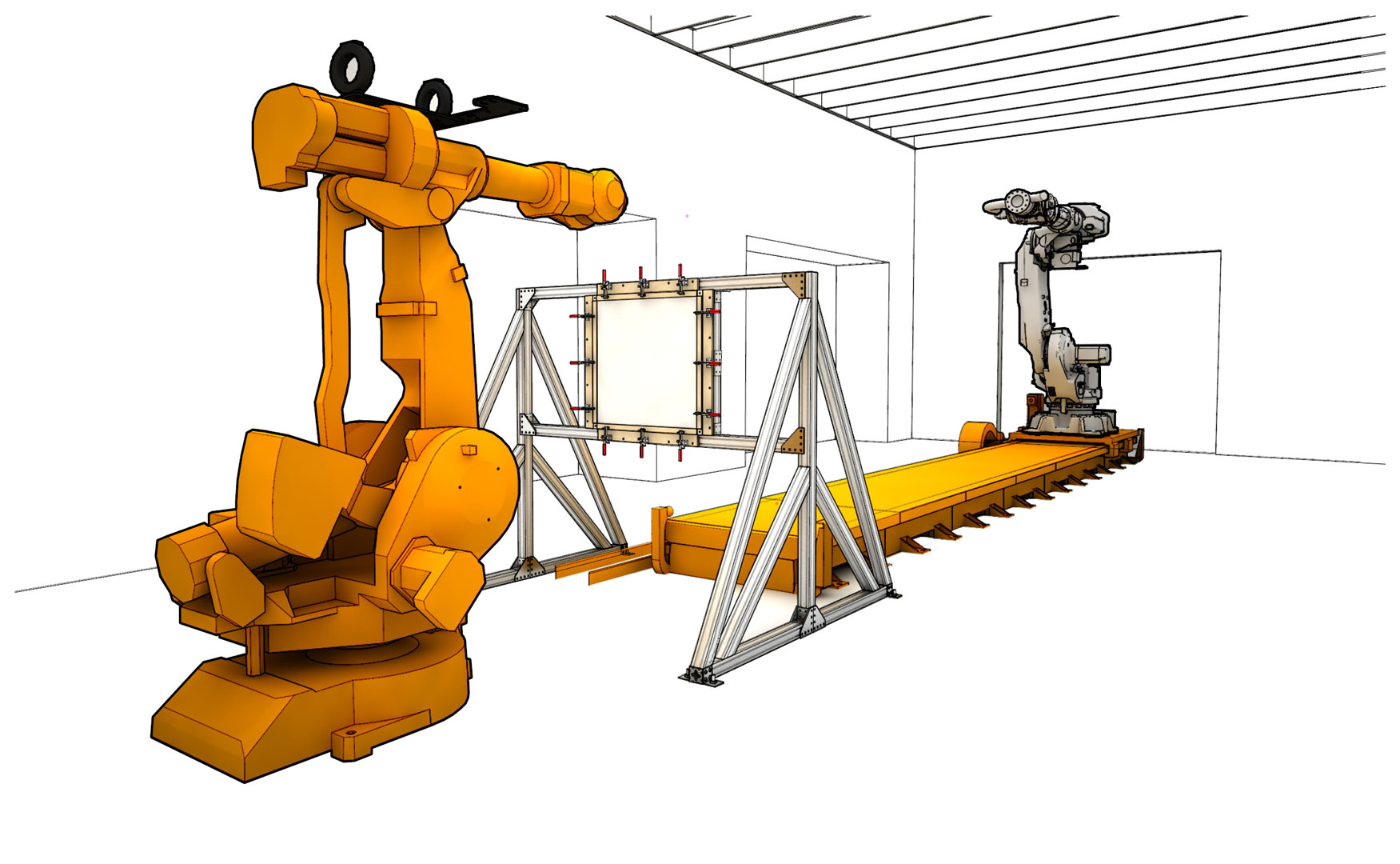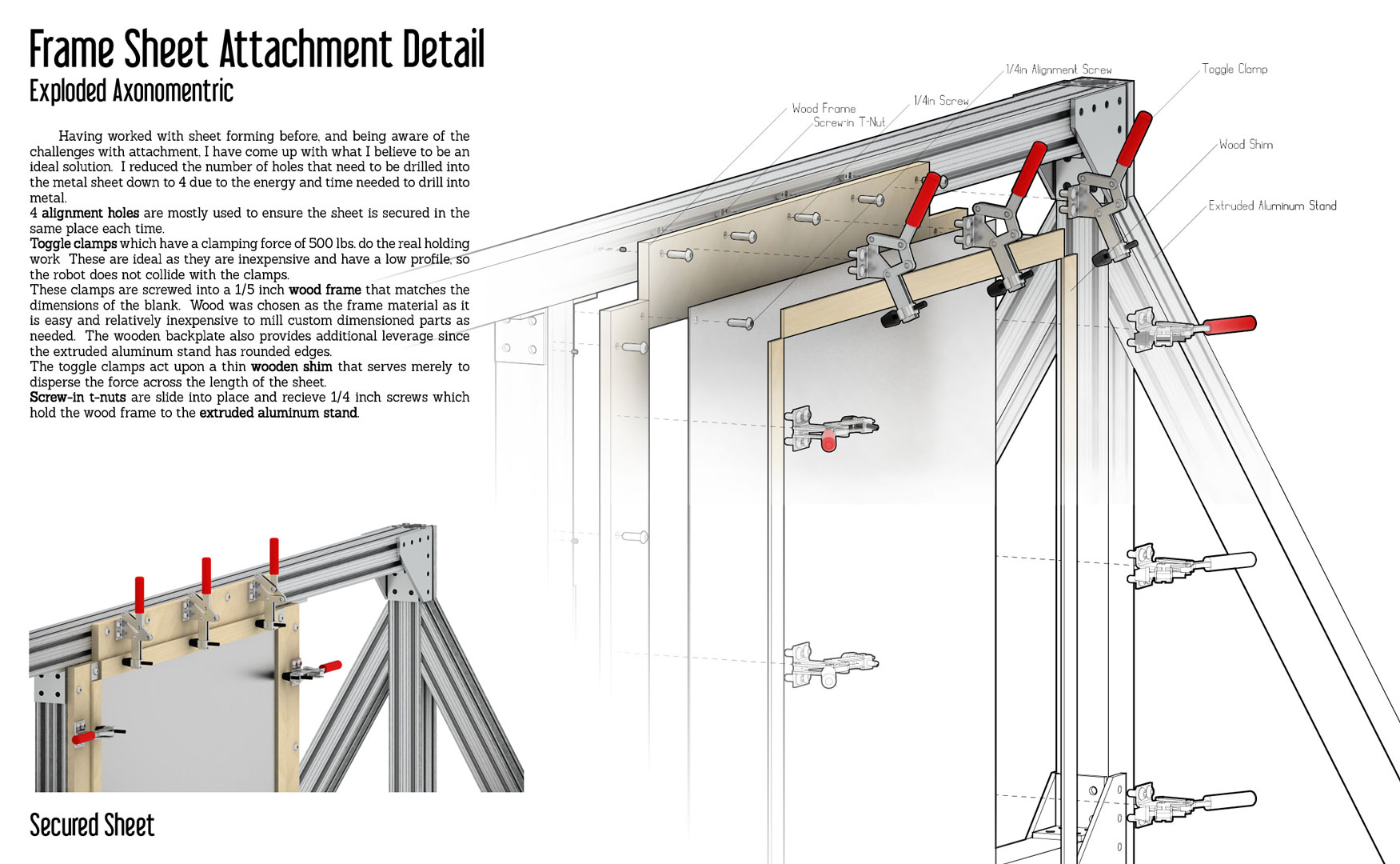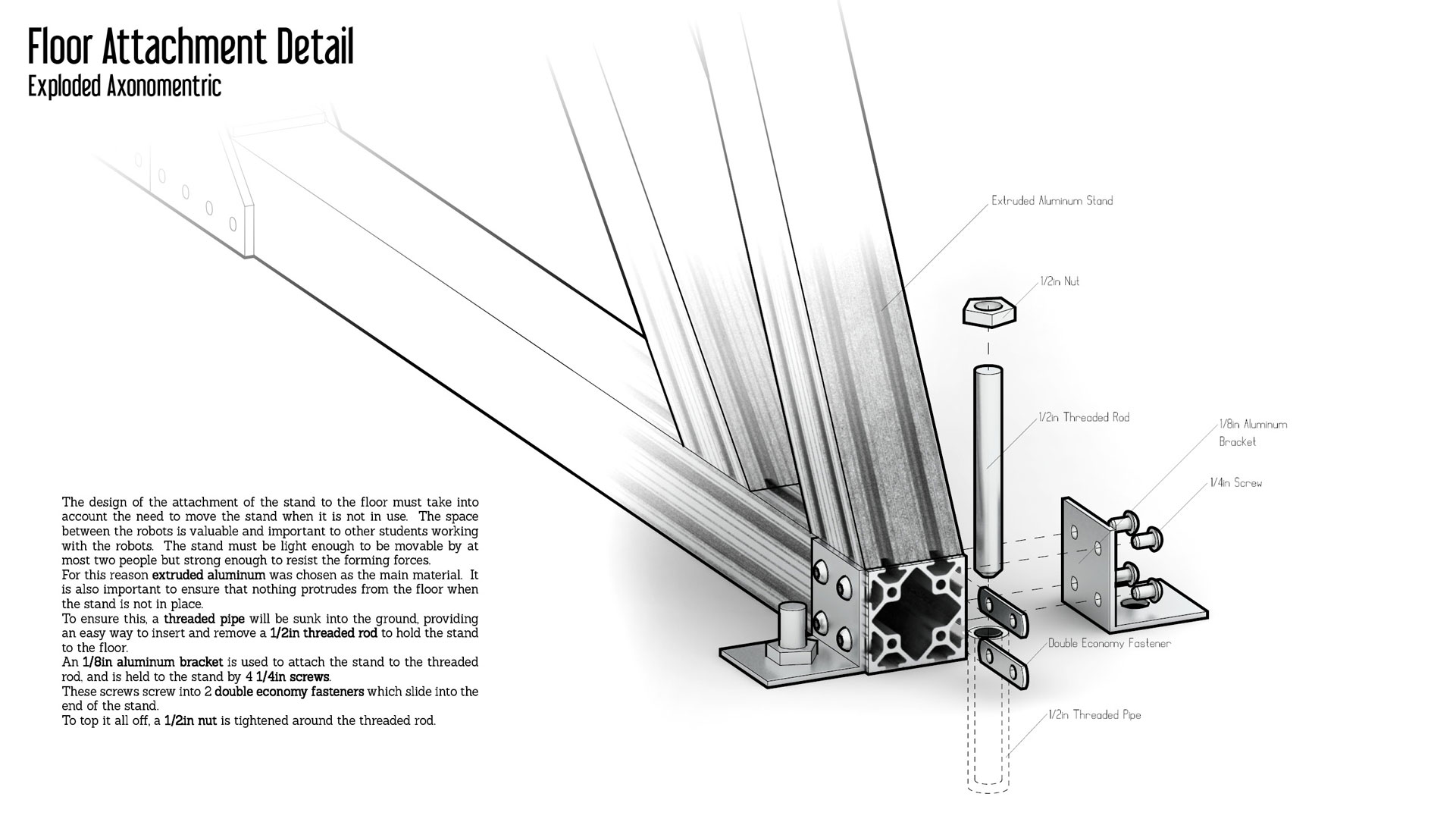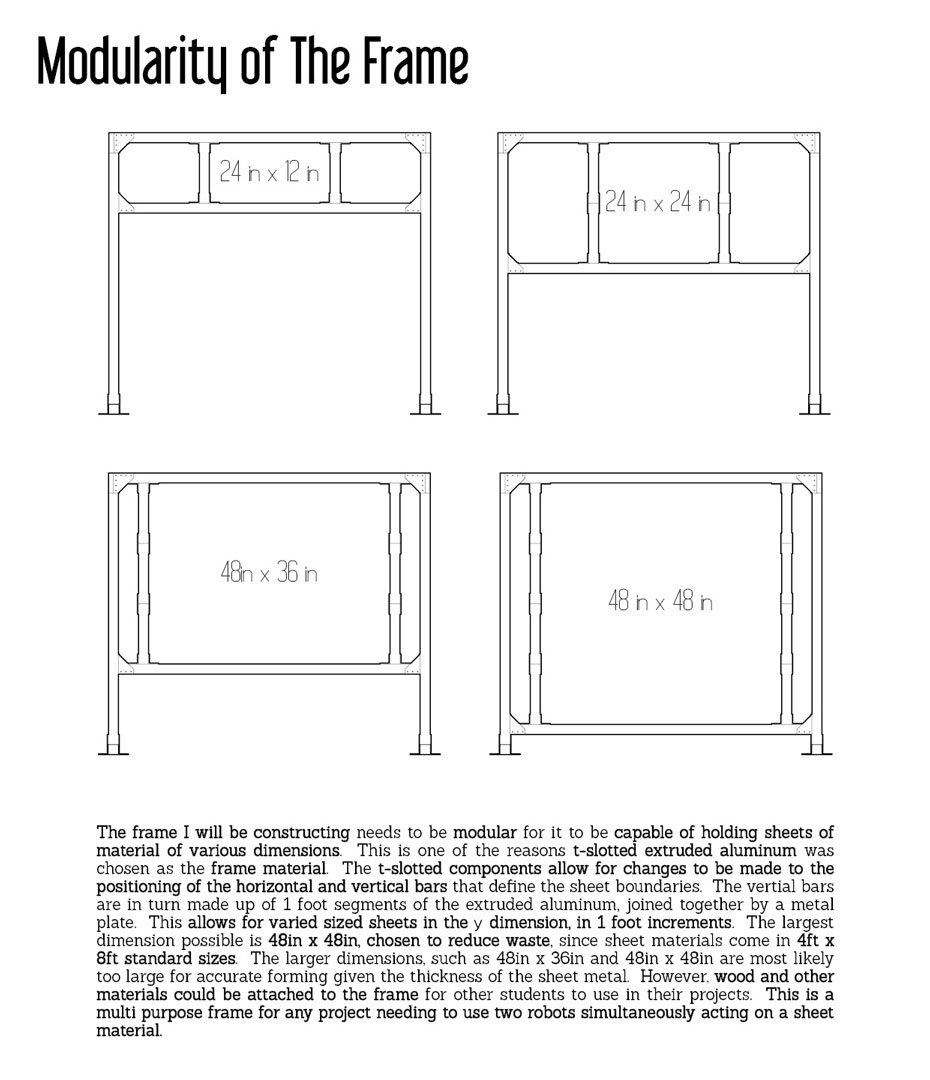Having worked with sheet forming before, and being aware of the challenges with attachment, I have come up with what I believe to be an ideal solution. I reduced the number of holes that need to be drilled into the metal sheet down to 4 due to the energy and time needed to drill into metal.
4 alignment holes are mostly used to ensure the sheet is secured in the same place each time.
Toggle clamps which have a clamping force of 500 lbs. do the real holding work These are ideal as they are inexpensive and have a low profile, so the robot does not collide with the clamps.
These clamps are screwed into a 1/5 inch wood frame that matches the dimensions of the blank. Wood was chosen as the frame material as it is easy and relatively inexpensive to mill custom dimensioned parts as needed. The wooden backplate also provides additional leverage since the extruded aluminum stand has rounded edges.
The toggle clamps act upon a thin wooden shim that serves merely to disperse the force across the length of the sheet.
Screw-in t-nuts are slide into place and recieve 1/4 inch screws which hold the wood frame to the extruded aluminum stand.
The design of the attachment of the stand to the floor must take into account the need to move the stand when it is not in use. The space between the robots is valuable and important to other students working with the robots. The stand must be light enough to be movable by at most two people but strong enough to resist the forming forces.
For this reason extruded aluminum was chosen as the main material. It is also important to ensure that nothing protrudes from the floor when the stand is not in place.
To ensure this, a threaded pipe will be sunk into the ground, providing an easy way to insert and remove a 1/2in threaded rod to hold the stand to the floor.
An 1/8in aluminum bracket is used to attach the stand to the threaded rod, and is held to the stand by 4 1/4in screws.
These screws screw into 2 double economy fasteners which slide into the end of the stand.
To top it all off, a 1/2in nut is tightened around the threaded rod.
The frame I will be constructing needs to be modular for it to be capable of holding sheets of material of various dimensions. This is one of the reasons t-slotted extruded aluminum was chosen as the frame material. The t-slotted components allow for changes to be made to the positioning of the horizontal and vertical bars that define the sheet boundaries. The vertical bars are in turn made up of 1 foot segments of the extruded aluminum, joined together by a metal plate. This allows for varied sized sheets in the y dimension, in 1 foot increments. The largest dimension possible is 48in x 48in, chosen to reduce waste, since sheet materials come in 4ft x 8ft standard sizes. The larger dimensions, such as 48in x 36in and 48in x 48in are most likely too large for accurate forming given the thickness of the sheet metal. However, wood and other materials could be attached to the frame for other students to use in their projects. This is a multi-purpose frame for any project needing to use two robots simultaneously acting on a sheet material.






Leave a Reply